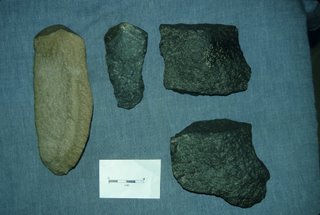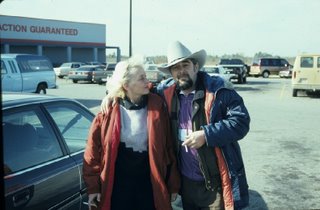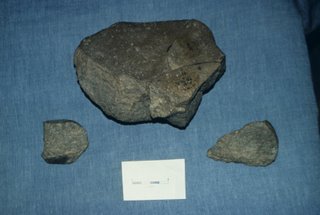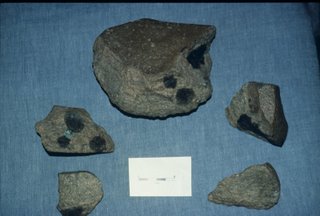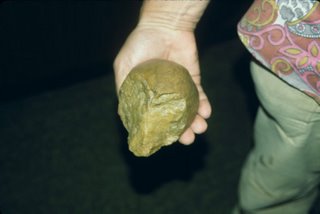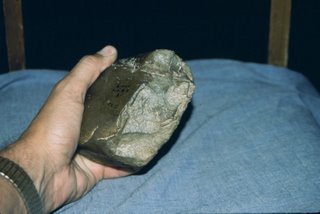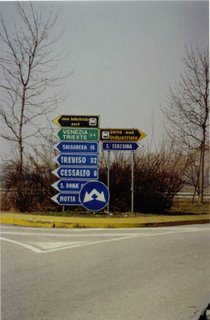Monday, October 23, 2006
Ogni tanto se ne discute ancora, la solita storia vecchia dell'Idraulico e dell'Ingegnere ha ancora audience e pubblico. Qualche anno fa addirittura la stampa internazionale (forse Newsweek?) ci fece una copertina sul "Polish Plumber". Una icona dell'Europa dei tempi moderni, un po' come la nostra "Casalinga di Voghera", tutta mercati rionali e TV nazional-popolare. L'altro giorno ho trovato nel web una bella riflessione sull'argomento a firma di Giorgio Monteforti. La posto qui perchè denuncia ironiocamente delle grandi verità. Io, se avessi la fortuna di rinascere, opterei decisamente per Idraulico...
... Tutto e' cominciato negli anni '70 con il povero idraulico che andava nelle case della media borghesia a sturare il gabinetto. Lui osservava e confrontava la sua tuta bisunta con la cravatta e la camicia immacolata dell'avvocato, la sua casa popolare di tre stanzette scarse con l'attico dell'ingegnere. Sebbene per sturare un water non ci volesse una grande scienza, quelle famiglie patinate non ci pensavano neppure lontanamente a metterci le mani, e si accorse che poteva chiedere qualsiasi cifra che tanto quelli pagavano sollevati. Comincio' allora a farsi pagare caro, sempre piu' caro. Tutto quell'inaspettato ben di Dio sarebbe andato ai figli: basta con le case popolari, basta con gli stracci sporchi di grasso! Loro meritavano un futuro migliore fatto di attici e camicie immacolate. I figli studiarono da ingegnere e da avvocato, ma il mondo gira in fretta, e quando finirono l'universita' l'essere dottori o dottoroni non era piu' un biglietto di sola andata per il benessere e la rispettabilita' sociale. Mentre i figli dell'idraulico si sottoponevano a tirocini nazisti, stage a paghe africane e Co.Co.Co per lavorare da avvocato e da ingegnere, il padre andava al lavoro in SUV, con il cellulare ultimo modello per prendere appuntamenti di li' a due mesi, con la tuta fresca di bucato perche' a sporcarsi ci pensava lo stuolo dei suoi dipendenti albanesi. Se dopo gli studi i figli si fossero messi una bella salopette, avessero imparato dallo sgorgare cessi e lavandini al montare impianti, avessero cioe' acquisito la conoscenza pratica, unedola alle loro indubbie competenze e capacita' teoriche sviluppate con anni di duro studio, dopo alcuni anni l'azienda artigiana di papa' sarebbe diventata una PMI da qualche milione di euro e loro sedrebbero in ufficio (in giacca e cravatta) a dirigere, programmare, progettare. Ma ne' i figli avrebbero osato pensare di impillaccherarsi di ruggine ne' il padre avrebbe permesso loro di prendere in mano una chiave inglese ora che aveva un ingegnere e un avvocato per casa. Peccato solo che il sogno borghese sia tramontato vent'anni fa. Con quello comunista...
Tirem innanz!
Buona giornata.
zespri
Tuesday, October 10, 2006
While reading Colin Thubron book about his trip through Siberia, I came across this great character of a real Russian archaeologist: Yuri A. Mochanov.
I was intrigued by his theories and discoveries, which - though not new - I support to some extent. His researches seem to give new life to an ancient theory by a German naturalist, Moritz Wagner, a contemporary of Charles Darwin who in the 1870s, argued that humans evolved in cold climates. There are many possibilities that this happened in reality. Cold climetes, severe weather conditions and living "at the edge of existence" could be driving factors that stimulated the intelligence to evolve, to command fire, to create tools, shelters and survive.
Here I found some general information about Yuri A. Mochanov life and researches. I will for sure go deeper, I think the subject it's quite interesting.
Siberian Site Diring Yuriakh and Russian archaeologist Yuri A. Mochanov
Yuri Mochanov is a Russian archaeologist at the Russian Academy of Sciences, best known as the excavator at the early hominid site of Diring Yuriakh, in Siberia.
A vast archaeological site in Siberia challenged anthropologists to reconsider theories of human evolution and dispersal. Because of his discoveries over the past 10 years at the Diring site on the Lena River, Yuri A. Mochanov, a prominent Russian archaeologist, has concluded that hominids lived in the far north in the Earliest Paleolithic, possibly as long as 3 million years ago.
Perhaps, he dares suggest, humans might not have originated in Africa.
Mochanov presented his findings at the 45th Annual Northwest Anthropological Conference at Simon Fraser University in Burnaby, British Columbia (1994). Mochanov, a member of the faculty of the Academy of Science at Yakutsk, Siberia, was making his first appearance at a scientific meeting in North America. His presentation obviously perplexed American and Canadian anthropologists and archaeologists. Siberia is not supposed to be a place to look for stone tools more than maybe 35,000 years old— certainly not more than a million years old.
Mochanov’s initial discovery was made in 1982 in a region where archaeological investigations had been in progress for many years. Work there produced several Late Paleolithic sites of the Diuktai tradition (see article on page 5). His wife, archaeologist Svetlana Fedoseeva, was excavating a site of the Ymyakhtakh (pronounced you-me-AK-tach) culture of the Late Neolithic period—dating to 3,000–4,000 years ago—that contained an interesting tomb and burials. Below the burials they made a startling discovery.
“We found absolutely unusual stone tools,” he told a plenary session of the Simon Fraser conference. They were pebble tools; the team promptly enlarged its excavation to find the source.
“We thought it was a mistake—impossible,” Mochanov said through an interpreter. The tools they found resembled materials found at Olduvai Gorge in East Africa. Initial discoveries were near the surface, yet geological indicators pointed to unbelievably early dates—1.8 to 3.4 million years. The excavation proceeded following the mysterious cultural layer back into an abrupt slope that rises more than 100 m above the Lena River.
Many of Mochanov’s Soviet colleagues chose to disbelieve and some continue to reject his theories about the site and its perplexing evidence. In spite of Mochanov’s background as a graduate of the prestigious University of Leningrad—a distinction roughly parallel to an American’s having a doctorate from Harvard or Yale—he has received much criticism.
Americans and Canadians attending Mochanov’s presentation undoubtedly had questions, too, about what they heard, saw in his slides, and read in the synopsis distributed to the audience. As one veteran archaeologist commented to a colleague shortly after the presentation: “It’s the kind of a site that you’d be tempted to cover up and ignore, because you’d know you’d have to spend the rest of your life defending it.” Mochanov has plenty of experience defending the Diring and related sites.
Host of the Northwest conference, Simon Fraser archaeologist Roy Carlson, has visited the Diring site and is convinced that Mochanov’s material is both typologically and geologically old. “They are genuinely artifacts,” Carlson said of the Diring pebble tools.
As Mochanov showed slides of the site, viewers gasped at the vast extent of the excavation. To an archaeologist accustomed to excavating units a meter or two wide, the sheer scope was staggering. Aerial photographs seemed to depict an open-pit mine, yet that overall view of a huge gash in a forested hillside wasn’t merely a scene-setter, the entirety was the Diring site! To follow what he had identified as the cultural layer back into an ancient riverside terrace, Mochanov had the help of the Soviet Army and heavy earth-moving equipment. The excavation cuts as deep as 40 m into the hillside.
The Diring site is on a terrace above the con¬fluence of Diring Yurekh (Deep Creek) with the Lena River, 140 km upstream from the city of Yakutsk. The site is due north of the Korean peninsula at 61 degrees latitude—approximately 2,500 miles straight west of Anchorage, Alaska.
The cultural layer that Mochanov identifies as Earliest Paleolithic (Oldowan) has produced more than 4,000 artifacts, 500 of which have been identified as tools. “Most representative are various kinds of choppers, heavy-duty scrapers and unifacial scraper-shaped discs,” says Mochanov in the English-language synopsis of his presentation. The tools tended to occur in clusters, often surrounding anvil stones. As Mochanov showed slides of the clusters, it was not difficult to imagine placing a fist-sized pebble on the anvil stone and striking it with a hammer stone while bits of broken rock scattered in all directions. The clusters are composed of considerable lithic debris. Mochanov says the clusters vary in extent from 10 to 30 square meters.
In an interview after the conference, Carlson described his first look at the artifacts in Mochanov’s lab in Yakutsk. “We looked at some of the anvil stones, which do show battering marks on them, and some of the broken cobbles that could be refitted together.” He has no doubt that they are artifacts. After traveling to the Diring site, Carlson observed bulldozers at work moving the sandy overburden, and saw in situ clusters of broken cobbles, anvil stones and tools.
Mochanov says that according to technical and typological indicators, the Diring complex is unlike any in Siberia and unlike any in all of Eurasia, adding that “it has the greatest similarity only with the stone assemblages of different Oldowan sites of the Earliest Paleolithic in Africa dating from approximately 1.7 to 2.7 million years B.P.”
Surfaces of the pebbles in the clusters, including the apparent man-made scars, were all abraded by sand, indicating that they had been on top of the ground for a long time. Mochanov says that corrosion serves as an important stratigraphic indicator of the cultural layer of the Diring site, which tends to be about 3–5 cm thick, but is 10–15 cm thick in places. It lies on river-bed alluvium, the most ancient terrace of the Lena River, and is overlain by layers of alluvium. The deposits are dated geologically between 1.8 and 3.4 million years. Magneto-chronological dating produced an even older date, and radio-thermoluminescence dating also indicated dates of well over a million years. It was a cold period in Siberia—even colder than the present.
“Now,” says Mochanov, throwing down a challenge to his own unbelievable conclusions, “it is up to the scientists—the experts—to see how right or wrong we are.”
“If these dates are valid, then Diring is the most ancient Paleolithic monument of Eurasia, and one of the most ancient in the world for the time being.”
Mochanov devoted the final part of his presentation to speculation on human origins. He dedicated his paper to German naturalist Moritz Wagner, a contemporary of Charles Darwin who in the 1870s argued that humans evolved in cold climates.
“How could I possibly think that humans could come from Africa without any clothes and live in permafrost area?” Mochanov quipped. He went on to argue that human predecessors required the stresses of living at the edge of existence to be stimulated to evolve the intelligence to command fire, create tools and survive.
The possibility of hominids living relatively close to North America as long as 3 million years ago has staggering implications for questions about the peopling of the Americas. It also would require complete rethinking of anthropological theory. Recent debates have centered not on where humans came from but merely when.
Anthropologists have long agreed that the genus Homo evolved in Africa. Some members of the Homo erectus species are believed to have migrated out of Africa more than a million years ago, but there is little agreement about hominid evolution in the few million years previous that led to the development of the Homo lineage. Many fossils, as well as the East African footprints Mary Leakey found at Laetoli, demonstrate that hominids were walking upright 3.7 million years ago, about a million years before any stone tools are known to have existed. Did a few generations of adventuresome walkers span continents so long ago?
Tools are considered important markers of the origins of Homo. The ability to look at a rock and visualize a completed tool that could, for example, shear meat more handily than the teeth of lions and hyenas or the beaks of vultures is taken as an important dimension of humanity. Most anthropologists accept Australopithecus and Homo habilis as predecessors of Homo erectus, but there are two distinct views of how modern Homo sapiens evolved.
In one view, now called the “regional continuity” theory, the Homo erectus populations in Africa, Asia and Europe slowly evolved into Homo sapiens between one million and 100,000 years ago, with genetic continuity maintaining the connected-ness of the species’ changes. This view has been challenged in the past decade by genetic analyses that suggest that the level of differences among modern humans is so small that the species must have been generated in one specific region within the last 200,000 years. In this second model, it is expected that one group of Homo erectus developed some new attributes or anatomical, ecological or behavioral advantage and subsequently spread to the rest of the world, replacing all earlier humans. This view has become known as the “replacement” or “out of Africa” theory, because Africa is considered the most likely site of modern Homo sapiens.
Existing theory offers no means to explain the presence of a population of hominids living and making Oldowan-style pebble tools in the far north as long as 3 million years ago. Mochanov goes back to the 19th-century theory of Moritz Wagner to suggest an explanation. Wagner, says Mochanov, believed that the cooling of the environment in the Late Pliocene was crucial to human evolution. “As man had to search to rescue himself from cold and darkness,” Mochanov says in his written paper, “it stimulated him to manufacture tools and to use fire.” Extreme environmental stresses, he suggests, are what gave a pre-human species the fateful (and, no doubt to most individuals, fatal) genetic nudge to develop the large brain that defines Homo. “Stress influences mutation,” Mochanov told his audience, and such stresses occur not in the center of a habitat but on the edge. On the blackboard of the Simon Fraser University lecture hall he drew a large circle as he spoke. “In remote places, on the edge,” he said, indicating the upper extremity of his circle, “a very interesting phenomenon occurs.” At the edge of existence—Siberia, for example—”adaptive peaks” may occur. There, on the edge, he suggested, is the likely cradle of humanity.
Carlson says he believes in keeping an open mind. “While we still think that Africa is the most reasonable homeland, nevertheless there are some things that need to be explained. So far they haven’t been.” David Huntley, a Simon Fraser University physicist, expects to help seek an explanation later this year by going to the Diring site to do thermoluminescent dating of some newly uncovered artifacts. Carlson explains that the technique, which dates the last time artifacts were exposed to light, requires unearthing artifacts in the dark of night, difficult at such a northerly site when summer days are so long.
After Mochanov noted that dignitaries who have visited the Diring site included a Cosmonaut who declared that investigating Earth with a shovel is as interesting as investigating it from space, he invited his North American colleagues to join in his search for answers.
The puzzle of human origins can be approached, he says, “only by joining the efforts of scientists of different disciplines and countries. I trust that the joint work in this direction is as important as the joint flight of Soyuz-Apollo.”
Primitive humans thrived in the harsh, cold climate of northern Siberia 300,000 years ago, eons earlier than once believed possible, as indicated by the dating of stone tools found in frozen tundra. The finding means that primitive humans were clever enough to live in one of the most severe climates on Earth far earlier than most experts had thought possible, said Michael Waters of Texas A&M University, the head of a field expedition to Siberia. "Prior to this, the oldest known occupants of Siberia were about 30,000 years ago," said Waters. "Before this, it was thought that only (anatomically) modern humans could have lived there." He added, "It shows us that people even in that early time had the skills to deal with the severe cold."
The study, to be published in the journal Science, adds to a growing body of evidence that primitive humans were more intelligent, organized and resourceful than previously believed. Other scientists reported this week the discovery in Germany of some 400,000-year-old spears and evidence of a skilled hunting culture. Waters said these findings are a surprise because most researchers had thought sophisticated survival skills came into wide use among ancient humanlike animals only with the appearance about 150,000 years ago of anatomically modern humans. The Siberian site is called Diring Yuriakh. It is located on a plateau above the Lena River, near the town of Yakutsk about 480 km south of the Arctic Circle.
Russian archaeologists first excavated the site in 1982 and discovered that it was an ancient quarry that had been used during several different periods of human occupation over many thousands of years. Waters and colleagues from the University of Illinois were invited to determine the age of the oldest site using a technique that counts the number of electrons trapped in the grains of quartzite sand. The Americans took a number of samples, said Waters, and determined that the crude stone tools were between sediment layers 260,000 to 370,000 years old.
Waters said the weather in Siberia 300,000 years ago is thought to have been very much like the present-day weather. Winter temperatures at Diring Yuriakh routinely drop to minus 50, and the soil freezes down to about 1 meter. No bones, animal or human, have been found in Diring Yuriakh, and Waters said it is uncertain how long the ancient humans lived there. Their primary food source also is unknown, he said, although the nearby Lena River probably had fish, and large animals, such as elephant-like mammoths, lived in the area. "We know very little about these humans," said Waters. He said it is not known which of the premodern human species could have lived at the Siberian site 300,000 years ago.
Some scientists have said the crude stone tools found at Diring Yuriakh were actually made by natural processes, not by human hand. But archaeologist Rob Bonnichsen of Oregon State University said he believes the site analyzed by the Waters team clearly was once a home to an ancient people. "It is obvious that this is a human site," said Bonnichsen. The fist-size stone tools recovered from the site are thought to be quartz stones that were shaped by pounding them against other stones until a sharp edge was developed. The process left markings that could not be made by natural forces, said Waters. But the ultimate proof came when scientists found a debris pile at what may have been a toolmaker's work station. In the debris pile were distinctive quartz flakes. Some of the flakes could be fitted exactly into the sharpened faces of some of the stone tools, said Waters.
The sharp edges of a quartz tool, found near Yakutsk, Siberia, shows the toolmaking ability of early humans, throwing back the date of the earliest technology to 300,000 years ago, long before the modern human type emerged.
A vast archaeological site in Siberia challenged anthropologists to reconsider theories of human evolution and dispersal. Because of his discoveries over the past 10 years at the Diring site on the Lena River, Yuri A. Mochanov, a prominent Russian archaeologist, has concluded that hominids lived in the far north in the Earliest Paleolithic, possibly as long as 3 million years ago.
Perhaps, he dares suggest, humans might not have originated in Africa.
Mochanov presented his findings at the 45th Annual Northwest Anthropological Conference at Simon Fraser University in Burnaby, British Columbia (1994). Mochanov, a member of the faculty of the Academy of Science at Yakutsk, Siberia, was making his first appearance at a scientific meeting in North America. His presentation obviously perplexed American and Canadian anthropologists and archaeologists. Siberia is not supposed to be a place to look for stone tools more than maybe 35,000 years old— certainly not more than a million years old.
Mochanov’s initial discovery was made in 1982 in a region where archaeological investigations had been in progress for many years. Work there produced several Late Paleolithic sites of the Diuktai tradition (see article on page 5). His wife, archaeologist Svetlana Fedoseeva, was excavating a site of the Ymyakhtakh (pronounced you-me-AK-tach) culture of the Late Neolithic period—dating to 3,000–4,000 years ago—that contained an interesting tomb and burials. Below the burials they made a startling discovery.
“We found absolutely unusual stone tools,” he told a plenary session of the Simon Fraser conference. They were pebble tools; the team promptly enlarged its excavation to find the source.
“We thought it was a mistake—impossible,” Mochanov said through an interpreter. The tools they found resembled materials found at Olduvai Gorge in East Africa. Initial discoveries were near the surface, yet geological indicators pointed to unbelievably early dates—1.8 to 3.4 million years. The excavation proceeded following the mysterious cultural layer back into an abrupt slope that rises more than 100 m above the Lena River.
Many of Mochanov’s Soviet colleagues chose to disbelieve and some continue to reject his theories about the site and its perplexing evidence. In spite of Mochanov’s background as a graduate of the prestigious University of Leningrad—a distinction roughly parallel to an American’s having a doctorate from Harvard or Yale—he has received much criticism.
Americans and Canadians attending Mochanov’s presentation undoubtedly had questions, too, about what they heard, saw in his slides, and read in the synopsis distributed to the audience. As one veteran archaeologist commented to a colleague shortly after the presentation: “It’s the kind of a site that you’d be tempted to cover up and ignore, because you’d know you’d have to spend the rest of your life defending it.” Mochanov has plenty of experience defending the Diring and related sites.
Host of the Northwest conference, Simon Fraser archaeologist Roy Carlson, has visited the Diring site and is convinced that Mochanov’s material is both typologically and geologically old. “They are genuinely artifacts,” Carlson said of the Diring pebble tools.
As Mochanov showed slides of the site, viewers gasped at the vast extent of the excavation. To an archaeologist accustomed to excavating units a meter or two wide, the sheer scope was staggering. Aerial photographs seemed to depict an open-pit mine, yet that overall view of a huge gash in a forested hillside wasn’t merely a scene-setter, the entirety was the Diring site! To follow what he had identified as the cultural layer back into an ancient riverside terrace, Mochanov had the help of the Soviet Army and heavy earth-moving equipment. The excavation cuts as deep as 40 m into the hillside.
The Diring site is on a terrace above the con¬fluence of Diring Yurekh (Deep Creek) with the Lena River, 140 km upstream from the city of Yakutsk. The site is due north of the Korean peninsula at 61 degrees latitude—approximately 2,500 miles straight west of Anchorage, Alaska.
The cultural layer that Mochanov identifies as Earliest Paleolithic (Oldowan) has produced more than 4,000 artifacts, 500 of which have been identified as tools. “Most representative are various kinds of choppers, heavy-duty scrapers and unifacial scraper-shaped discs,” says Mochanov in the English-language synopsis of his presentation. The tools tended to occur in clusters, often surrounding anvil stones. As Mochanov showed slides of the clusters, it was not difficult to imagine placing a fist-sized pebble on the anvil stone and striking it with a hammer stone while bits of broken rock scattered in all directions. The clusters are composed of considerable lithic debris. Mochanov says the clusters vary in extent from 10 to 30 square meters.
In an interview after the conference, Carlson described his first look at the artifacts in Mochanov’s lab in Yakutsk. “We looked at some of the anvil stones, which do show battering marks on them, and some of the broken cobbles that could be refitted together.” He has no doubt that they are artifacts. After traveling to the Diring site, Carlson observed bulldozers at work moving the sandy overburden, and saw in situ clusters of broken cobbles, anvil stones and tools.
Mochanov says that according to technical and typological indicators, the Diring complex is unlike any in Siberia and unlike any in all of Eurasia, adding that “it has the greatest similarity only with the stone assemblages of different Oldowan sites of the Earliest Paleolithic in Africa dating from approximately 1.7 to 2.7 million years B.P.”
Surfaces of the pebbles in the clusters, including the apparent man-made scars, were all abraded by sand, indicating that they had been on top of the ground for a long time. Mochanov says that corrosion serves as an important stratigraphic indicator of the cultural layer of the Diring site, which tends to be about 3–5 cm thick, but is 10–15 cm thick in places. It lies on river-bed alluvium, the most ancient terrace of the Lena River, and is overlain by layers of alluvium. The deposits are dated geologically between 1.8 and 3.4 million years. Magneto-chronological dating produced an even older date, and radio-thermoluminescence dating also indicated dates of well over a million years. It was a cold period in Siberia—even colder than the present.
“Now,” says Mochanov, throwing down a challenge to his own unbelievable conclusions, “it is up to the scientists—the experts—to see how right or wrong we are.”
“If these dates are valid, then Diring is the most ancient Paleolithic monument of Eurasia, and one of the most ancient in the world for the time being.”
Mochanov devoted the final part of his presentation to speculation on human origins. He dedicated his paper to German naturalist Moritz Wagner, a contemporary of Charles Darwin who in the 1870s argued that humans evolved in cold climates.
“How could I possibly think that humans could come from Africa without any clothes and live in permafrost area?” Mochanov quipped. He went on to argue that human predecessors required the stresses of living at the edge of existence to be stimulated to evolve the intelligence to command fire, create tools and survive.
The possibility of hominids living relatively close to North America as long as 3 million years ago has staggering implications for questions about the peopling of the Americas. It also would require complete rethinking of anthropological theory. Recent debates have centered not on where humans came from but merely when.
Anthropologists have long agreed that the genus Homo evolved in Africa. Some members of the Homo erectus species are believed to have migrated out of Africa more than a million years ago, but there is little agreement about hominid evolution in the few million years previous that led to the development of the Homo lineage. Many fossils, as well as the East African footprints Mary Leakey found at Laetoli, demonstrate that hominids were walking upright 3.7 million years ago, about a million years before any stone tools are known to have existed. Did a few generations of adventuresome walkers span continents so long ago?
Tools are considered important markers of the origins of Homo. The ability to look at a rock and visualize a completed tool that could, for example, shear meat more handily than the teeth of lions and hyenas or the beaks of vultures is taken as an important dimension of humanity. Most anthropologists accept Australopithecus and Homo habilis as predecessors of Homo erectus, but there are two distinct views of how modern Homo sapiens evolved.
In one view, now called the “regional continuity” theory, the Homo erectus populations in Africa, Asia and Europe slowly evolved into Homo sapiens between one million and 100,000 years ago, with genetic continuity maintaining the connected-ness of the species’ changes. This view has been challenged in the past decade by genetic analyses that suggest that the level of differences among modern humans is so small that the species must have been generated in one specific region within the last 200,000 years. In this second model, it is expected that one group of Homo erectus developed some new attributes or anatomical, ecological or behavioral advantage and subsequently spread to the rest of the world, replacing all earlier humans. This view has become known as the “replacement” or “out of Africa” theory, because Africa is considered the most likely site of modern Homo sapiens.
Existing theory offers no means to explain the presence of a population of hominids living and making Oldowan-style pebble tools in the far north as long as 3 million years ago. Mochanov goes back to the 19th-century theory of Moritz Wagner to suggest an explanation. Wagner, says Mochanov, believed that the cooling of the environment in the Late Pliocene was crucial to human evolution. “As man had to search to rescue himself from cold and darkness,” Mochanov says in his written paper, “it stimulated him to manufacture tools and to use fire.” Extreme environmental stresses, he suggests, are what gave a pre-human species the fateful (and, no doubt to most individuals, fatal) genetic nudge to develop the large brain that defines Homo. “Stress influences mutation,” Mochanov told his audience, and such stresses occur not in the center of a habitat but on the edge. On the blackboard of the Simon Fraser University lecture hall he drew a large circle as he spoke. “In remote places, on the edge,” he said, indicating the upper extremity of his circle, “a very interesting phenomenon occurs.” At the edge of existence—Siberia, for example—”adaptive peaks” may occur. There, on the edge, he suggested, is the likely cradle of humanity.
Carlson says he believes in keeping an open mind. “While we still think that Africa is the most reasonable homeland, nevertheless there are some things that need to be explained. So far they haven’t been.” David Huntley, a Simon Fraser University physicist, expects to help seek an explanation later this year by going to the Diring site to do thermoluminescent dating of some newly uncovered artifacts. Carlson explains that the technique, which dates the last time artifacts were exposed to light, requires unearthing artifacts in the dark of night, difficult at such a northerly site when summer days are so long.
After Mochanov noted that dignitaries who have visited the Diring site included a Cosmonaut who declared that investigating Earth with a shovel is as interesting as investigating it from space, he invited his North American colleagues to join in his search for answers.
The puzzle of human origins can be approached, he says, “only by joining the efforts of scientists of different disciplines and countries. I trust that the joint work in this direction is as important as the joint flight of Soyuz-Apollo.”
Primitive humans thrived in the harsh, cold climate of northern Siberia 300,000 years ago, eons earlier than once believed possible, as indicated by the dating of stone tools found in frozen tundra. The finding means that primitive humans were clever enough to live in one of the most severe climates on Earth far earlier than most experts had thought possible, said Michael Waters of Texas A&M University, the head of a field expedition to Siberia. "Prior to this, the oldest known occupants of Siberia were about 30,000 years ago," said Waters. "Before this, it was thought that only (anatomically) modern humans could have lived there." He added, "It shows us that people even in that early time had the skills to deal with the severe cold."
The study, to be published in the journal Science, adds to a growing body of evidence that primitive humans were more intelligent, organized and resourceful than previously believed. Other scientists reported this week the discovery in Germany of some 400,000-year-old spears and evidence of a skilled hunting culture. Waters said these findings are a surprise because most researchers had thought sophisticated survival skills came into wide use among ancient humanlike animals only with the appearance about 150,000 years ago of anatomically modern humans. The Siberian site is called Diring Yuriakh. It is located on a plateau above the Lena River, near the town of Yakutsk about 480 km south of the Arctic Circle.
Russian archaeologists first excavated the site in 1982 and discovered that it was an ancient quarry that had been used during several different periods of human occupation over many thousands of years. Waters and colleagues from the University of Illinois were invited to determine the age of the oldest site using a technique that counts the number of electrons trapped in the grains of quartzite sand. The Americans took a number of samples, said Waters, and determined that the crude stone tools were between sediment layers 260,000 to 370,000 years old.
Waters said the weather in Siberia 300,000 years ago is thought to have been very much like the present-day weather. Winter temperatures at Diring Yuriakh routinely drop to minus 50, and the soil freezes down to about 1 meter. No bones, animal or human, have been found in Diring Yuriakh, and Waters said it is uncertain how long the ancient humans lived there. Their primary food source also is unknown, he said, although the nearby Lena River probably had fish, and large animals, such as elephant-like mammoths, lived in the area. "We know very little about these humans," said Waters. He said it is not known which of the premodern human species could have lived at the Siberian site 300,000 years ago.
Some scientists have said the crude stone tools found at Diring Yuriakh were actually made by natural processes, not by human hand. But archaeologist Rob Bonnichsen of Oregon State University said he believes the site analyzed by the Waters team clearly was once a home to an ancient people. "It is obvious that this is a human site," said Bonnichsen. The fist-size stone tools recovered from the site are thought to be quartz stones that were shaped by pounding them against other stones until a sharp edge was developed. The process left markings that could not be made by natural forces, said Waters. But the ultimate proof came when scientists found a debris pile at what may have been a toolmaker's work station. In the debris pile were distinctive quartz flakes. Some of the flakes could be fitted exactly into the sharpened faces of some of the stone tools, said Waters.
The sharp edges of a quartz tool, found near Yakutsk, Siberia, shows the toolmaking ability of early humans, throwing back the date of the earliest technology to 300,000 years ago, long before the modern human type emerged.
Thermoluminescence
Although the best known form of luminescence dating is thermoluminescence (or TL), there are several scientific methods which can specify the date of certain artifacts or soil sediments by measuring the amount of light energy they have trapped in their crystals. To put it simply, certain minerals, such as quartz, feldspar, and calcite, store energy from the sun at a known rate. This energy is lodged in the imperfect lattices of the mineral's crystals. Heating these crystals (such as when a pottery vessel is fired or when rocks in a fire-place are heated) empties the stored energy, after which time the mineral begins absorbing energy again. TL dating is a matter of comparing the energy stored in a crystal to what "ought" to be there, thereby coming up with a date-of-last-heated. In the same way, more or less, OSL (optically stimulated luminescence) dating measures the last time an object was exposed to sunlight.
Luminescence dating is good for between a few hundred to several hundred thousand years, making it much more useful than carbon dating.
Luminescence dating is good for between a few hundred to several hundred thousand years, making it much more useful than carbon dating.
Cautions for Use of Thermoluminescence Dating of Sediment
The use of thermoluminescence (TL) dating of sediments at the sites of Jinmium (Fullagar et al. 1996) and Diring Yuriakh (Waters 1997) have yielded shockingly old ages that have created a storm in Palaeolithic archaeology (Gibbons 1997). At Jinmium, the results suggest that the peopling of Australia occurred about 110,000 years ago, more than twice as old as previously believed (Roberts et al. 1990). Similarly, the site of Diring Yuriakh in Siberia, a site regarded by many to not be any older than about 30,000 years has been dated to greater than about 250,000 years. In contrast to dating of sediments where optical exposure resets the clock, the more conventional applications of thermoluminescence dating of burned flint and pottery operate on the basis of resetting by heating. The great advantage of the latter methods is that heat is a potent agent to completely remove the pre-existing (geological) TL signals, whereas solar resetting can only partially deplete those TL signals in quartz and feldspar grains in sediments. Most workers agree that the TL results for Jinmium and Diring Yuriakh need confirmation using modern optical luminescence dating methods.
Recent improvements in luminescence dating technology have greatly enhanced our ability to date sedimentation events in this time range through the application of optical luminescence (OSL) dating, which is rapidly replacing the older technology of TL dating. Natural light exposure in air will only reduce the TL signal to a residual non-zero value. The size of the residual TL signal is dependent upon the type and duration of light exposure. Solar resetting of the TL signal is most efficient when the proportion of ultraviolet radiation is large, whereas low levels of visible light and ultraviolet light will be the least efficient. Full sunlight has the highest UV levels, while daylight under cloud cover has less UV and underwater light has the least UV and reduced levels of visible light. Turbidity also reduces visible light in air and water by scattering processes. Solar resetting of OSL signals in quartz and infrared-stimulated luminescence (IRSL) in feldspar and quartz also obey the same general rules, but relative to TL signals, the rate of depletion is much more rapid for OSL and IRSL signals. In full sunlight this can occur in seconds to minutes. Furthermore, OSL and IRSL signals reach a true zero value rather than the non-zero value for TL in quartz and feldspar.
What does all this mean for the archaeologist who is trying to interpret the significance of dating results? It means that one can be more certain that OSL or IRSL signals were depleted to a known (zero) level than for TL signals under the same set of ancient conditions. Even underwater conditions are known to yield complete zeroing of OSL signals. Aeolian sediments are the best, while those deposited in water are less preferable. Moreover, there are techniques available in IRSL and OSL to test whether partial resetting of sediments occurred (e.g. Clarke 1996).
So, it seems that any TL date on sediment should at least be verified by IRSL or OSL. But there are also other problematic aspects to the use of these methods. As with radiocarbon dating, the question arises: What is the event that is being dated? Some have argued that artifacts can move down through sandy sediments, and therefore the age of the sediment may be older than that of the artifacts. Another problem is that burrowing rodents can move sediment and artifacts through a vertical dimension, and then the effects of time can obscure the evidence of the burrows. Certainly though, evidence of burrows in the youngest part of a site are a clue that past burrowing might have created disturbances in the archaeological and sedimentary record.
How can controversial dating results be best debated among dating experts and users? I believe that no matter how modern the dating technology, the ultimate test of a date is whether it can be reproduced by an independent lab with access to the original site. Reassessment of the original context is essential, because without additional dating and reconsideration of the depositional context, informed scientific debate cannot easily develop. After all, if a date cannot be reproduced by an independent group of researchers, then there is a basis for debate. But if a date stands up to critical appraisal, then there can be greater confidence that new ground has been broken, and Science can move forward. Are the dates for Jinmium and Diring Yuriakh right? Only time will tell, but see Roberts (1998) for an appraisal.
Recent improvements in luminescence dating technology have greatly enhanced our ability to date sedimentation events in this time range through the application of optical luminescence (OSL) dating, which is rapidly replacing the older technology of TL dating. Natural light exposure in air will only reduce the TL signal to a residual non-zero value. The size of the residual TL signal is dependent upon the type and duration of light exposure. Solar resetting of the TL signal is most efficient when the proportion of ultraviolet radiation is large, whereas low levels of visible light and ultraviolet light will be the least efficient. Full sunlight has the highest UV levels, while daylight under cloud cover has less UV and underwater light has the least UV and reduced levels of visible light. Turbidity also reduces visible light in air and water by scattering processes. Solar resetting of OSL signals in quartz and infrared-stimulated luminescence (IRSL) in feldspar and quartz also obey the same general rules, but relative to TL signals, the rate of depletion is much more rapid for OSL and IRSL signals. In full sunlight this can occur in seconds to minutes. Furthermore, OSL and IRSL signals reach a true zero value rather than the non-zero value for TL in quartz and feldspar.
What does all this mean for the archaeologist who is trying to interpret the significance of dating results? It means that one can be more certain that OSL or IRSL signals were depleted to a known (zero) level than for TL signals under the same set of ancient conditions. Even underwater conditions are known to yield complete zeroing of OSL signals. Aeolian sediments are the best, while those deposited in water are less preferable. Moreover, there are techniques available in IRSL and OSL to test whether partial resetting of sediments occurred (e.g. Clarke 1996).
So, it seems that any TL date on sediment should at least be verified by IRSL or OSL. But there are also other problematic aspects to the use of these methods. As with radiocarbon dating, the question arises: What is the event that is being dated? Some have argued that artifacts can move down through sandy sediments, and therefore the age of the sediment may be older than that of the artifacts. Another problem is that burrowing rodents can move sediment and artifacts through a vertical dimension, and then the effects of time can obscure the evidence of the burrows. Certainly though, evidence of burrows in the youngest part of a site are a clue that past burrowing might have created disturbances in the archaeological and sedimentary record.
How can controversial dating results be best debated among dating experts and users? I believe that no matter how modern the dating technology, the ultimate test of a date is whether it can be reproduced by an independent lab with access to the original site. Reassessment of the original context is essential, because without additional dating and reconsideration of the depositional context, informed scientific debate cannot easily develop. After all, if a date cannot be reproduced by an independent group of researchers, then there is a basis for debate. But if a date stands up to critical appraisal, then there can be greater confidence that new ground has been broken, and Science can move forward. Are the dates for Jinmium and Diring Yuriakh right? Only time will tell, but see Roberts (1998) for an appraisal.
Luminescence Dating of Quartzite From the Diring Yuriakh Site
The lower cultural stratum (stratum 5) at the Diring Yuriakh archaeological site, in Siberia, Russia, contains crude stone tools, which, it has been suggested, were made before the currently accepted earliest occupation of Siberia in the Upper Palaeolithic (ca. 35,000 years ago). The stratum 5 artifacts are mostly quartzites, which contain a great deal of quartz. The artifacts lie on a deflation surface, and show evidence of wind abrasion, so it is likely that they were exposed to sunlight for a period of time before being buried by the overlying sediments. Experiments were undertaken to see if these quartzites could be dated using luminescence dating techniques similar to those that have been used to date the last time quartz grains extracted from sediments were exposed to sunlight. A method was developed to extract quartz grains from the quartzites, layer by layer, using successive 30 minute treatments of 50% hydrofluoric (HF) acid. By comparing the luminescence signal of quartz grains from each layer of quartzite recently exposed to sunlight, it was found possible to determine how deep into the quartzite the sunlight penetrated sufficiently to reduce the luminescence to zero. This allows selection of quartz grains for luminescence dating that should have been exposed to sufficient sunlight in the past. Dating attempts were made on quartzite samples from stratum 5 and stratum 2 ( a deeper non-cultural stratum), and it was found that the traps in the quartz grains were in saturation. After determining the radiation dose required to saturate the traps the dose-rate was calculated for each sample and then minimum age limits were determined. A stratum 2 quartzite was found, using thermoluminescence, to be last exposed to sunlight more than 150 ka ago. A stratum 2 control sample, which was expected to be in saturation on the basis of its supposed age, was found not to be in saturation, and yielded an equivalent dose of 440 90 Gy, using 1.4 eV excitation. The evidence presented for a stratum 5 quartzite suggest it was last exposed to sunlight over 74 ka ago
Yuri Mochanov does not dispute that humans may also have evolved in Africa and, perhaps, Southeast Asia. He has brought back some 4,000 stone tools collected at 15 sites in the Siberian permafrost to bolster his claim that Siberia, too, was a point of origin for hominids (see map).
"Molchanov's controversial evidence is indeed striking: a collection of chipped and flaked rocks that are clearly artifacts fashioned by humanlike hands and that he contends are 2.5 million years old -- plus or minus a half-million years.
"Remarkably, that same era marked the time when early human ancestors known as Homo habilis lived and left their remains in the tropical Olduvai Gorge of what is now Tanzania. Mochanov's collection of tools closely resembles the ones that anthropologists have long collected from digs in Africa."
All this contrasts strongly with the dominant view of hominid evolution, which cites warm, verdant African forests and savannas as our most likely place of origin. Siberia, with its -50° winters and fleeting summers, hardly seems conducive to hominid speciation. Mochanov's rationale is that this severe climate actually stimulated ancient hominids to create tools, fashion warm clothing, and build winter shelters - these Siberian hominids had to evolve or perish!
In addition to the climate factor are two other problems: (1) The Siberian sites have yielded no hominid bones nor have animal bones of any kind been found; and (2) The dating of the tools is shaky. They cannot be radiometrically dated. Instead, Mochanov has had to rely on the tools' similarity to African tools of 2 million years ago, magnetostratigraphy, the decayed luminescence of the soil, and the ages of the strata in the 450-foot gorge of the Lena River. It goes without saying that other anthropologists are reserving judgment.
Nevertheless, Mochanov's Siberian discoveries have produced a magnitude-8 tremor in science.
A short summary of Mochanov's research appeared in: Stone, Richard; "Turning Out-of-Africa Inside Out," Science, 262:1963, 1993.
A short summary of Mochanov's research appeared in: Stone, Richard; "Turning Out-of-Africa Inside Out," Science, 262:1963, 1993.
It is odd that some other archeological sites with apparently very ancient tools, such as that at Calico Hills, California, are also devoid of hominid bones and radiometrically datable artifacts. A similar situation prevails at many North American epigraphic sites, where someone wrote copiously in ancient symbols but left little else to betray their identities.
Monday, October 09, 2006
Solita Veneto week.
Venerdì il rientro è stato incredibile. Litigo con il viva-voce dell'auto che si era incantato e smanetto (a 110 km/h in corsia centrale) con il telefono in mano. Cinque, dico cinque secondi e una pattuglia della Polstrada mi si affianca in sorpasso. Sorridendo come il gatto e la volpe, i due baldi rappresentanti delle forze dell'ordine mi fanno accostare alla prima piazzola.
- Buongiorno. Patente e libretto, per favore.
...
- Stava telefonando, vero?
- Eh, direi di si, mi si è incantato il viva-voce...
- Beh, aspetti un attimo che le faccio il verbale.
...
- Allora sono 68,66€ e 5 punti patente. Certo, se non commetterà altre infrazioni li recupera in un anno.
- Che bellezza!
- Arrivederci
- Buona giornata a Voi.
Non è finita. Dopo 10 km... ta-dah! Esplosione del pneumatico anteriore dx. Ma vaff...
Sostituzione della gomma con vari smadonnamenti per l'assenza del giubbino ad alta visibilità e del triangolo. Questi mezzi del parco auto sono abbandonati a loro stessi. Stamattina ho inoltrato un reclamo formale al Travel Service. Gomme usurate ed equipaggiamento incompleto. Vediamo un po'!
Ero, tra l'altro, già seccato, in quanto al posto della solita sistemazione, mi hanno appioppato una stanza all'OMNIA Hotel. Un albergone all'uscita dell'autostrada. Un incubo. Due pullman di turisti cinesi in gita a Venezia e rappresentante di commercio romano che ha sbraitato fino alle 01:00 a.m. al telefono. Sono venuto a conoscenza di tutti i suoi affari e dei suoi orari alla toilette. Alla faccia delle camere completamente insonorizzate, pubblicizzate sul web-site!! Ma vergognatevi! Ho dormito male per quattro notti. Lo sciopero dei trasporti è stata la cigliegina sulla torta. Tre ore e mezza per entrare a Milano. Ma va, va! Te la dò io l'Europa.
Uniche note positive, la scoperta di due ristorantini graziosi, uno di pesce ed uno di carne.
Il Tajer d'Oro merita una sosta (www.tajerdoro.it). Ho gustato un misto di crudo davvero gradevole, composto da scampetti marinati, tartare di tonno e carpaccio di branzino. A seguire un ottimo filetto di rombo al forno su caponata tiepida. Buono il prosecco della casa e fantastico il soufflè al cioccolato accompagnato da un verduzzo passito incredibile.
Più informale e rustico il Nuovo Bottegon. La cucina è umbro-toscana, nonostante il patron, Simone, sia un veneto d.o.c. Le specialità sono la cacciagione e carni alla griglia accompagnate da ottimi vini. Alcuni dei piatti tipici che è possibile assaporare sono: la ribollita, cinghiale alla maremmana, faraona alle castagne. Per tutti i primi piatti viene utilizzata solo pasta fresca e c’è, per chi lo desidera, la possibilità di completare il pasto con uno dei dessert di produzione propria.
Io ho optato per una insalatina di porcini freschi e una tartare di chianina superba. Se vi piacciono le grappe non fatevi mancare una riserva 2000 del Castagner con qualche scaglia di cioccolato fondente 75%.
Saluti.
zespri
Monday, October 02, 2006

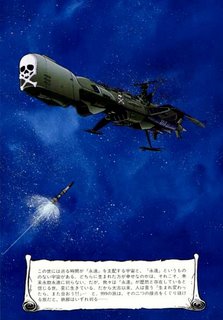
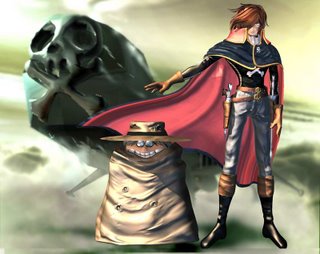
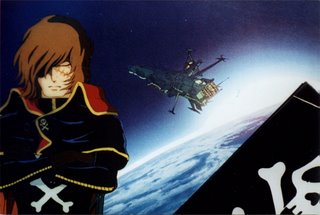
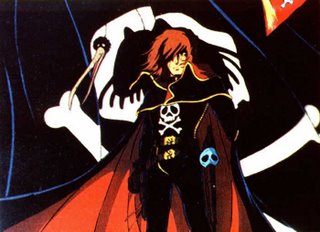
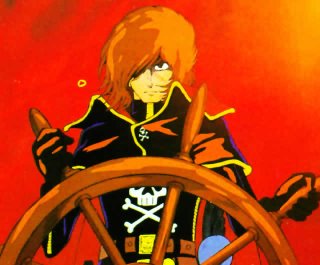
Questo week-end, frugando tra le mie vecchie cose (moving aftermath), ho ritrovato il bambolotto di gomma che riproduceva Capitan Harlock. Un colpo al cuore! Era in assoluto l'eroe della mia infanzia! Più di Goldrake, più di Geeg, più di Starblazers. L'eroe in assoluto. Ma ve lo ricordate?
Cupo, silenzioso, con una lunga cicatrice che gli taglia il viso ed una benda sull'occhio destro; un lungo mantello che volteggia intorno a lui; sul suo fianco sinistro pende una spada e sul destro una pistola, una "cosmic gun". Stiamo parlando del più incredibile dei pirati, che non vaga per gli oceani normali, bensì nel cosmo. A bordo dell'incredibile nave spaziale Alkadia ci guida attraverso mille avventure lungo i confini del cosmo.
"Io... mi batto solo per quello in cui credo. Non per uno stato o un pianeta in particolare. Lotto solamente per gli ideali che ho nel cuore.Io erro lungo le rotte delle stelle... la gente mi chiama CAPITAN HARLOCK... nell'oscuro mare stellare, nello spazio infinito e senza domani, finchè ci sarà anche un unico sole che arde nel cosmo, io vivrò in libertà sotto il mio vessillo. Io vago per i confni dello spazio... la gente mi chiama CAPITAN HARLOCK... il "black jack" è issato sulla mia nave, e con questa bandiera che sventola tra le stelle, io vivo in libertà. L'universo è la mia casa... la voce sommessa di questo mare infinito mi invoca, e mi invita a vivere senza catene... la mia bandiera è un simbolo di libertà."
In questa frase viene sintetizzata l'essenza del pensiero di Harlock. La libertà, l'essere contro le assurde regole della società in cui vive, e al tempo stesso rispettare un codice d'onore verso se stesso e chi gli è più caro. Harlock è un Pirata, e come simbolo ha un teschio con due ossa incrociate: il "Jolly Roger", o, come Matsumoto ha preferito, "Black Jack". E' un simbolo di morte, che incute timore, ma per Harlock assume il significato di libertà
Harlock è un antieroe che, pur essendo catalogato come "fuorilegge", conserva una profonda bontà d'animo verso le persone a lui care. Ma soprattutto, Harlock è una scintilla di libertà in un mondo apatico, lassista, abbandonato a se stesso e alle sue macchine. Un mondo che sta morendo, e che Harlock, insieme al suo grande amico Tochiro e ad Emeraldas, sogna di far rinascere un giorno. Lui intende far scoprire all'Umanità, schiava di se stessa e del progresso da lei creato, i valori che sono andati ormai persi: le potenzialità dell'individuo in una società ormai collettivizzata, il pensiero indipendente laddove si ragiona per dogmi, il rimettersi continuamente in discussione, proteggere la natura che ci circonda, rispettarla e vivere in armonia con essa. L'amore, l'amicizia, il rispetto e la lealtà verso i propri amici e, perchè no, verso i propri nemici valorosi. Tutto quello che la società del 2977 ha perso e dimenticato, e che un ingegnere buffo, una coraggiosa piratessa e un uomo schivo e taciturno vogliono a tutti i costi recuperare. Harlock ama la terra, non i terrestri. Nel cartone animato, i toni sono stati addolciti, forse anche per merito (o colpa) del doppiaggio italiano, ma nel fumetto le cose sono come Matsumoto le ha create. Harlock chiama i terrestri "porci". Eppure difende la Terra. Meglio un'umanità così com'è che non la terra in mano al popolo di Mazone: finchè ci sarà l'Alkadia, esisterà almeno una possibilità di cambiare lo status quo. Tra le sue occupazioni c'è quella di intercettare le risorse che gli umani stanno continuando a sprecare per poterle distribuire quando, terminato lo scempio, comincerà una carestia. Non ha certo voglia di arricchirsi.A causa dei suoi ideali, dunque, Harlock è visto di cattivo occhio dal governo terrestre, che non ci pensa due volte prima di catalogarlo come fuorilegge e metterlo al bando con una condanna a morte, almeno nel cartone animato. Nel manga, non c'è una condanna a morte, solo il discredito gettato dal governo terrestre sulla sua figura, al quale Harlock è del tutto indifferente. Difende la Terra dall'invasione di Mazone, ma solo per onorare la memoria di Tochiro, e per difendere la piccola Mayu.
Harlock, già di per se schivo e taciturno, accentua ulteriormente queste sue caratteristiche col fatto di aver subito in passato gravi perdite che lo hanno segnato profondamente. La sua decisione, la fermezza e la profonda calma nelle situazioni di pericolo, il fatto di essere un leader dal forte carisma, possono essersi in qualche modo forgiati anche attraverso i suoi trascorsi da ufficiale della marina spaziale terrestre.
L'amicizia è forse uno dei valori più forti per Harlock, ed è pronto a sacrificare se stesso per un amico. Anche perchè diverse persone a lui care sono morte perchè lui vivesse e continuasse a lottare per i suoi ideali.
"Io... mi batto solo per quello in cui credo. Non per uno stato o un pianeta in particolare. Lotto solamente per gli ideali che ho nel cuore.Io erro lungo le rotte delle stelle... la gente mi chiama CAPITAN HARLOCK... nell'oscuro mare stellare, nello spazio infinito e senza domani, finchè ci sarà anche un unico sole che arde nel cosmo, io vivrò in libertà sotto il mio vessillo. Io vago per i confni dello spazio... la gente mi chiama CAPITAN HARLOCK... il "black jack" è issato sulla mia nave, e con questa bandiera che sventola tra le stelle, io vivo in libertà. L'universo è la mia casa... la voce sommessa di questo mare infinito mi invoca, e mi invita a vivere senza catene... la mia bandiera è un simbolo di libertà."
In questa frase viene sintetizzata l'essenza del pensiero di Harlock. La libertà, l'essere contro le assurde regole della società in cui vive, e al tempo stesso rispettare un codice d'onore verso se stesso e chi gli è più caro. Harlock è un Pirata, e come simbolo ha un teschio con due ossa incrociate: il "Jolly Roger", o, come Matsumoto ha preferito, "Black Jack". E' un simbolo di morte, che incute timore, ma per Harlock assume il significato di libertà
Harlock è un antieroe che, pur essendo catalogato come "fuorilegge", conserva una profonda bontà d'animo verso le persone a lui care. Ma soprattutto, Harlock è una scintilla di libertà in un mondo apatico, lassista, abbandonato a se stesso e alle sue macchine. Un mondo che sta morendo, e che Harlock, insieme al suo grande amico Tochiro e ad Emeraldas, sogna di far rinascere un giorno. Lui intende far scoprire all'Umanità, schiava di se stessa e del progresso da lei creato, i valori che sono andati ormai persi: le potenzialità dell'individuo in una società ormai collettivizzata, il pensiero indipendente laddove si ragiona per dogmi, il rimettersi continuamente in discussione, proteggere la natura che ci circonda, rispettarla e vivere in armonia con essa. L'amore, l'amicizia, il rispetto e la lealtà verso i propri amici e, perchè no, verso i propri nemici valorosi. Tutto quello che la società del 2977 ha perso e dimenticato, e che un ingegnere buffo, una coraggiosa piratessa e un uomo schivo e taciturno vogliono a tutti i costi recuperare. Harlock ama la terra, non i terrestri. Nel cartone animato, i toni sono stati addolciti, forse anche per merito (o colpa) del doppiaggio italiano, ma nel fumetto le cose sono come Matsumoto le ha create. Harlock chiama i terrestri "porci". Eppure difende la Terra. Meglio un'umanità così com'è che non la terra in mano al popolo di Mazone: finchè ci sarà l'Alkadia, esisterà almeno una possibilità di cambiare lo status quo. Tra le sue occupazioni c'è quella di intercettare le risorse che gli umani stanno continuando a sprecare per poterle distribuire quando, terminato lo scempio, comincerà una carestia. Non ha certo voglia di arricchirsi.A causa dei suoi ideali, dunque, Harlock è visto di cattivo occhio dal governo terrestre, che non ci pensa due volte prima di catalogarlo come fuorilegge e metterlo al bando con una condanna a morte, almeno nel cartone animato. Nel manga, non c'è una condanna a morte, solo il discredito gettato dal governo terrestre sulla sua figura, al quale Harlock è del tutto indifferente. Difende la Terra dall'invasione di Mazone, ma solo per onorare la memoria di Tochiro, e per difendere la piccola Mayu.
Harlock, già di per se schivo e taciturno, accentua ulteriormente queste sue caratteristiche col fatto di aver subito in passato gravi perdite che lo hanno segnato profondamente. La sua decisione, la fermezza e la profonda calma nelle situazioni di pericolo, il fatto di essere un leader dal forte carisma, possono essersi in qualche modo forgiati anche attraverso i suoi trascorsi da ufficiale della marina spaziale terrestre.
L'amicizia è forse uno dei valori più forti per Harlock, ed è pronto a sacrificare se stesso per un amico. Anche perchè diverse persone a lui care sono morte perchè lui vivesse e continuasse a lottare per i suoi ideali.
Primo tra tutti Tochiro (Toshiro in Italia), il piccolo ingegnere occhialuto che ha costruito l'Alkadia. Per costruirla, infatti, ha dato tutto se stesso, ci ha messo l'anima, ha dedicato la propria vita per inseguire lo stesso sogno di Harlock. Il loro destino, dunque, non poteva non incontrarsi. Nasce una grande amicizia che, purtroppo, finirà subito. Infatti, dopo la costruzione dell'Alkadia, proprio mentre sta salpando, Tochiro muore, privato ormai di ogni energia. Ma il suo sforzo estremo non resterà vano. E Harlock non perde del tutto Tochiro. La morte Tochiro lascia un grande vuoto nell'animo di Harlock.
Emeraldas, contrariamente alle apparenze, è la donna di Tochiro. Naturalmente è una grande amica di Harlock; anche essa ha scelto la via della pirateria, per le stesse ragioni di Harlock, anche se nei vari manga non lottano proprio fianco a fianco, ma si incontrano molto spesso. Nella prima serie compare solo nelle puntate dedicate alla giovinezza di Harlock e alla costruzione dell'Alkadia; non si sa bene se muoia, ma certamente sparirà dalla vita di Harlock e andrà a seguire la salma di Tochiro lanciata nello spazio. Nella seconda serie, ovviamente, le cose non stanno così: Emeraldas continuerà a vivere le proprie avventure al fianco di Harlock, e amerà Tochiro solo dopo la sua morte.
Del periodo relativo alla giovinezza di Harlock, restano due soli individui: Tori San, il rapace, e Meeme (Met in Italia, Clio in Francia). Tori San è quasi sempre con Harlock e, quando ricorda i tempi passati in cui erano in vita Emeraldas e Tochiro, comincia a lacrimare. Inoltre, anche lui, come il resto dell'equipaggio, si delizia dei piaceri dell'alcool, spesso in compagnia dello stesso Capitano. Harlock non se ne separerà mai e, molto probabilmente, lo avrà sulla sua spalla nel momento in cui arriverà la sua fine e quella dell'Alkadia. Meeme, ha "dedicato la propria vita ad Harlock". Meeme è originaria del pianeta Jura, il quale viene sconvolto da una guerra che porterà allo sterminio dell'ntera popolazione. Solo Meeme resterà viva, ma dovrà vedersela con una nuova specie di piante giganti che minacciano la sua vita. Per fortuna, Harlock passava di la, quasi per caso, e la trarrà in salvo. Così Meeme, ormai sola, dedicherà la propria vita ad Harlock. E' un essere dall'animo gentile, dolce, sensibile... avverte Harlock di ogni pericolo, ha un intuito speciale nel capire i suoi sentimenti, e lo consiglia in ogni decisione importante. Inoltre, dalla sua arpa vengono fuori dolci melodie che accompagnano le lunghe veglie del Capitano nei suoi alloggi a poppa dell'Alkadia. Ma, nella prima serie TV, Meeme NON è la donna di Harlock. Come dicevo prima, il suo è amore, ma nel più profondo senso platonico. E Harlock la ricambia.
Nella prima serie TV è stato aggiunto un personaggio che nel manga non compare: la piccola Mayu, la bimba con l'ocarina. Mayu è la figlia nata dall'amore tra Tochiro ed Emeraldas e, dopo la loro scomparsa, è diventata praticamente una figlia adottiva di Harlock. Egli, infatti, pur essendo un fuorilegge, è il tutore legale di Mayu, e, appena possibile, scende sulla terra per andarla a trovare. Su di lei riversa tutto l'amore e la tenerezza che le circostanze gli hanno negato, e, a parte pochi casi, solo con lei si lascia andare ad un sorriso. Nella prima puntata, le regala l'ocarina che egli stesso ha costruito, in occasione del suo settimo compleanno. Mayu sarà uno dei motivi più forti per cui Harlock difenderà la Terra. All'inizio della serie, sia nel manga che nella prima serie, Harlock incontrerà Tadashi Daiba (Dayu, nel cartone animato). Figlio del professor Daiba, grande amico di Harlock, vedrà morire suo padre sotto i colpi delle Mazoniane. Da quel momento, il suo destino si legherà a quello di Capitan Harlock, per volere dello stesso Harlock, e, dopo un periodo di scetticismo iniziale, dovuto ad una scarsa maturità, diverrà un membro effettivo dell'equipaggio dell'Alkadia. Harlock crede molto in lui, lo sostiene, lo lascia fare, lo protegge. Gli ricorda come era egli stesso da giovane, e molto probabilmente lo vuole educare affinchè, in un futuro, gli succeda al comando dell'Alkadia.
Un discorso a parte va fatto per Yukie e Yattaran; La prima, ufficiale di rotta dell'Alkadia e il secondo Vice Capitano; nella serie TV a loro sono dedicate due puntate in cui vengono narrate le loro vicende passate, come del resto accade anche per Maji (capo sala macchine) e il dottor Zero (medico e scienziato di bordo) con la piccola gattina Mew. Da tutto questo traspare una caratteristica imprortante, che rende quesa storia diversa dalle altre. Ognuno, Harlock compreso, è salito a bordo dell'Alkadia perchè aveva perso ormai tutto. E, salendo a bordo, ha trovato qualcosa di nuovo. L'affetto e la stima di tutti quanti, specialmente di Harlock. L'Alkadia è una famiglia, e ogni membro è importante. E' il nucleo che continuerà per sempre a tenere alti i valori che difende. E' il sogno di Tochiro realizzato, la zattera di salvataggio per un'umanità ormai persa, una moderna "Arca di Noe' " che salverà l'umanità da cataclismi ben peggiori che non un diluvio.
Un uomo come Harlock che combatte contro le ingiuste regole di una società che non gli appartiene, non poteva che farsi dei nemici. Il primo tra tutti è il governo terrestre. Nel manga non assistiamo ad una caccia spietata; piuttosto, ogni qual volta l'Alkadia fa la sua comparsa sulla Terra, il governo terrestre, nella fattispecie il Primo Ministro, si comportano da vigliacchi, fuggendo come se Harlock volesse distruggerli. In realtà, sempre nel manga, Harlock ha pensato più volte di distruggere la Terra che lo ha rinnegato, e anche lo stesso Tadashi è stato solleticato da questa idea. Ma a che pro? Harlock si rende conto che restare gli unici della propria specie è una cosa tristissima, e questo lo apprende da Meeme. Inoltre, non distruggera MAI la Terra per rispettare la memoria di Tochiro, che la amava e si struggeva per il suo destino. Nel cartone animato, invece, sparisce completamente l'odio per la Terra per far posto ad un senso di protezione dovuto alla presenza di Mayu. Inoltre, nel cartone è stata aggiunta la figura del Ministro Kirita, capo delle forze armate e acerrimo nemico di Harlock. Egli lo contrasterà in tutti i modi, anche i più subdoli (arriverà a rapire la piccola Mayu e a sfruttare i tranelli delle Mazoniane), finchè non si renderà conto del pericolo costituito dalla flotta di Raflesia e del vero ruolo di Harlock in tutta la faccenda;. Allora, e solo allora, aiuterà Harlock in tutti i modi possibili, arrivando a sacrificarsi per la salvezza dell'Alkadia.Ma il vero nemico di Harlock è Raflesia, regina del popolo di Mazone. Il rapporto tra i due è molto conflittuale, sia nel cartone animato che, soprattutto, nel manga. Sono nemici solo perchè Raflesia sta guidando il suo popolo verso la salvezza, facendolo emigrare dal pianeta Mazone in via di distruzione, per condurlo verso la loro "seconda patria", ovvero la nostra Terra. Dal manga si capisce molto chiaramente che la vita sulla Terra è comparsa grazie al popolo di Mazone, il quale da millenni stava letteralmente "preparando il terreno" per poterlo abitare. L'Uomo, divenendo una specie intelligente ha complicato le cose. E Harlock, per orgoglio, per rispetto della memoria di Tochiro, vuole impedire che Raflesia si impossessi di una cosa che, in fondo, è anche sua. Insomma, non si può proprio fare una distinzione tra "buoni" e "cattivi": Mazone lotta per la sopravvivenza, Harlock anche. Infatti, i due nemici si rispettano l'un l'altro e, alla fine, arriveranno a sedersi a tavolino e discutere davanti ad una bottiglia di "Brandy di Andromeda". Un improvviso attacco mazoniano, non comandato da Raflesia, interromperà questo colloquio. L'Alkadia si dienderà DA SOLA, e Raflesia ucciderà gli ufficiali che hanno comandato quell'attacco. E il manga finirà senza una fine ben precisa...Nel cartone animato, la caratterizzazione di Raflesia assume connotati ben diversi; oltre ad essere stata disegnata con un aspetto più cattivo, e non dolce come nel manga, Raflesia non si farà molti scrupoli nel tendere subdoli tranelli ad Harlock; anche lei rapirà Mayu, e arriverà addirittura ad uccidere dei civili del suo stesso popolo, anche se queste scene sono state tagliate in Italia. Eppure, anche qui nutrirà un profondo rispetto per il suo nemico, e quando si renderà conto della potenza e della testardaggine di Harlock, cercherà la via del compromesso.Infine, nella seconda serie i nemici sono gli alieni che hanno invaso la Terra, gli Illumidas. Questi hanno tutte le caratteristiche dei "cattivi" che abbiamo conosciuto nelle varie serie robotiche, per cui si va perdere tutto il senso poetico che Matsumoto ha voluto dare perfino ai nemici. Ciò non toglie che l'atteggiamento di Harlock nei confronti del loro capo, è comunque di fiero rispetto, specie quando ci sarà l'epico scontro tra i due; da questo scontro non ci sarà un vero e proprio vincitore; piuttosto, riconosciuta la superiorità di Harlock, il capo degli Illumidas deciderà di distruggere la propria astronave facendola scontrare con l'Arkadia, e morendo, ovviamente.
Harlock è un pirata. Il pirata, per quanto possa essere fuorilegge, è una persona libera. Tanto per cominciare, non ha nazionalità: la sua bandiera se la sceglie lui, e, non avendo nazionalità, non ha nemmeno leggi. Sta solo al suo buon cuore se comportarsi da "bastardo" oppure da paladino dai nobili sentimenti, come Harlock. Inoltre, al dilà di questo, la figura del Pirata è una figura sostanzialmente romantica, che ha un fascino tutto suo; ci porta con la fantasia altrove, verso luoghi esotici, e il contrasto che si crea mettendo un pirata in stile settecentesco in un contesto fantascientifico, in un futuro aveneristico, rende il tutto molto suggestivo.
La bandiera dei pirati ha un nome: "Jolly Roger". La sua forma, i suoi colori non sono sembre stati gli stessi; ogni pirata aveva la sua bandiera con il proprio simbolo, anche se i teschi la facevano da padrone, e il colore predominante era il ROSSO, che ricordava il sangue. I francesi denominarono queste bandiere con il nomignolo sarcastico di "Jolie Rogue" (Rosso Grazioso), che venne poi deformato dagli anglosassoni come "Jolly Roger". Ma esiste anche un'altra denominazione: "Black Jack". Questa comparve tra il 1660 e 1700 quando molti capitani pirati cominciarono a disegnare le proprie insegne bianche su campo nero, e si diffuse moltissimo l'uso della figura del teschio con le ossa incrociate, spesso con un occhio bendato. Ebbene, tale figura assunse il triste appellativo di "Black Jack", ed era molto spesso presagio di sventure o di morte sicura per mano dei pirati che si fregiavano di tale vessillo. Ed è proprio questo l'appellativo usato da Matsumoto per indicare la bandiera di Harlock, ma con un significato diverso. Harlock non è uno spietato fuorilegge, come mostrano le sue insegne, tutt'altro. Per cui, per Harlock, il "Black Jack" non è più simbolo di "morte", come in passato, ma assume il significato di "libertà", la libertà che egli difende.'Arcadia' è il nome di una regione del Peloponneso, quindi una regione della Grecia, che, nella mitologia classica, venne eletta come patria di poeti, filosofi, artisti e, in generale, di tutti gli uomini dall'animo libero. Quale nome migliore, dunque, per l'astronave di un uomo libero come Harlock? Non solo: Alkadia (uso la denominazione Giapponese), non è solo una astronave. E' un luogo, più spirituale che fisico, dove si respira libertà; ma è anche una comunità di uomini, quasi una famiglia. Dunque, il nome ha una triplice valenza, rafforzata peraltro dalla natura stessa del suo significato sia simbolico che storico-letterario. Insomma, non importa tanto la forma dell'astronave, né se esiste davvero o se si usa uno dei tre nomi con cui la si chiama (Arcadia, Alkadia o Arkadia); è importante conoscere il significato, o i significati che si celano dietro questa parola. Arcadia, terra libera.
La Terra del 2977 ormai, è sotto il controllo di un unico governo centrale (la cui sede è, ovviamente, Tokyo), il cui unico compito è quello di mantenere lo status-quo. Lo spazio è stato già in parte colonizzato, ma dai robot, non dagli uomini; essi provvedono allo sfruttamento intensivo delle risorse degli altri pianeti, poichè ormai le risorse della Terra vanno esaurendosi. Infatti, la ricchezza diffusa per tutti gli abitanti deriva da uno scellerato sfruttamento del nostro pianeta. Ad esempio, gli oceani sono ormai privi di forme di vita e vanno lentamente, ma inesorabilmente, prosciugandosi. Ma i terrestri non se ne curano affatto. Il benessere ha tolto loro la scintilla vitale che sarebbe dovuta essere la loro caratteristica. Vivono in uno stato di beata apatia, opportunamente alimentato dal governo stesso mediante la diffusione di onde ipnotiche attraverso la televisione. Il governo, poi, è composto da inetti, i quali non badano altro che ai propri interessi, costituiti da partite a golf, corse di cavalli, party... Certo, la TV non trasmette mica onde ipnotiche. Però, avete mai osservato il modo in cui un "teledipendente" la guarda? Mai notato come resta rapito, ipnotizzato... vi è mai capitato qualcuno che crede a tutte le BOIATE che la TV gli dice, e ci crede ciecamente? E poi, forse, il consumismo, il finto benessere che ci circonda e ci fa vivere una vita apparentemente felice, non rischia di toglierci l'ambizione, la voglia di fare, il mettersi continuamente in discussione? Non sta forse soffocando i valori più profondi come amicizia, amore, lealtà... e infine, non stiamo forse distruggendo la natura che ci circonda, a mio parere inevitabilmente? Forse tutto ciò è solo vuota retorica, ma riuscite a negarlo?Ebbene, Matsumoto, a mio parere, ha visto giusto. E Capitan Harlock, Tochiro, Emeraldas, l'Alkadia non sono altro che la NOSTRA COSCIENZA che dovrebbe infine risvegliarsi per farci capire che, forse, siamo in tempo per rimboccarci le maniche, fare dietro-front e cercare di salvare il salvabile.
Un uomo come Harlock che combatte contro le ingiuste regole di una società che non gli appartiene, non poteva che farsi dei nemici. Il primo tra tutti è il governo terrestre. Nel manga non assistiamo ad una caccia spietata; piuttosto, ogni qual volta l'Alkadia fa la sua comparsa sulla Terra, il governo terrestre, nella fattispecie il Primo Ministro, si comportano da vigliacchi, fuggendo come se Harlock volesse distruggerli. In realtà, sempre nel manga, Harlock ha pensato più volte di distruggere la Terra che lo ha rinnegato, e anche lo stesso Tadashi è stato solleticato da questa idea. Ma a che pro? Harlock si rende conto che restare gli unici della propria specie è una cosa tristissima, e questo lo apprende da Meeme. Inoltre, non distruggera MAI la Terra per rispettare la memoria di Tochiro, che la amava e si struggeva per il suo destino. Nel cartone animato, invece, sparisce completamente l'odio per la Terra per far posto ad un senso di protezione dovuto alla presenza di Mayu. Inoltre, nel cartone è stata aggiunta la figura del Ministro Kirita, capo delle forze armate e acerrimo nemico di Harlock. Egli lo contrasterà in tutti i modi, anche i più subdoli (arriverà a rapire la piccola Mayu e a sfruttare i tranelli delle Mazoniane), finchè non si renderà conto del pericolo costituito dalla flotta di Raflesia e del vero ruolo di Harlock in tutta la faccenda;. Allora, e solo allora, aiuterà Harlock in tutti i modi possibili, arrivando a sacrificarsi per la salvezza dell'Alkadia.Ma il vero nemico di Harlock è Raflesia, regina del popolo di Mazone. Il rapporto tra i due è molto conflittuale, sia nel cartone animato che, soprattutto, nel manga. Sono nemici solo perchè Raflesia sta guidando il suo popolo verso la salvezza, facendolo emigrare dal pianeta Mazone in via di distruzione, per condurlo verso la loro "seconda patria", ovvero la nostra Terra. Dal manga si capisce molto chiaramente che la vita sulla Terra è comparsa grazie al popolo di Mazone, il quale da millenni stava letteralmente "preparando il terreno" per poterlo abitare. L'Uomo, divenendo una specie intelligente ha complicato le cose. E Harlock, per orgoglio, per rispetto della memoria di Tochiro, vuole impedire che Raflesia si impossessi di una cosa che, in fondo, è anche sua. Insomma, non si può proprio fare una distinzione tra "buoni" e "cattivi": Mazone lotta per la sopravvivenza, Harlock anche. Infatti, i due nemici si rispettano l'un l'altro e, alla fine, arriveranno a sedersi a tavolino e discutere davanti ad una bottiglia di "Brandy di Andromeda". Un improvviso attacco mazoniano, non comandato da Raflesia, interromperà questo colloquio. L'Alkadia si dienderà DA SOLA, e Raflesia ucciderà gli ufficiali che hanno comandato quell'attacco. E il manga finirà senza una fine ben precisa...Nel cartone animato, la caratterizzazione di Raflesia assume connotati ben diversi; oltre ad essere stata disegnata con un aspetto più cattivo, e non dolce come nel manga, Raflesia non si farà molti scrupoli nel tendere subdoli tranelli ad Harlock; anche lei rapirà Mayu, e arriverà addirittura ad uccidere dei civili del suo stesso popolo, anche se queste scene sono state tagliate in Italia. Eppure, anche qui nutrirà un profondo rispetto per il suo nemico, e quando si renderà conto della potenza e della testardaggine di Harlock, cercherà la via del compromesso.Infine, nella seconda serie i nemici sono gli alieni che hanno invaso la Terra, gli Illumidas. Questi hanno tutte le caratteristiche dei "cattivi" che abbiamo conosciuto nelle varie serie robotiche, per cui si va perdere tutto il senso poetico che Matsumoto ha voluto dare perfino ai nemici. Ciò non toglie che l'atteggiamento di Harlock nei confronti del loro capo, è comunque di fiero rispetto, specie quando ci sarà l'epico scontro tra i due; da questo scontro non ci sarà un vero e proprio vincitore; piuttosto, riconosciuta la superiorità di Harlock, il capo degli Illumidas deciderà di distruggere la propria astronave facendola scontrare con l'Arkadia, e morendo, ovviamente.
Harlock è un pirata. Il pirata, per quanto possa essere fuorilegge, è una persona libera. Tanto per cominciare, non ha nazionalità: la sua bandiera se la sceglie lui, e, non avendo nazionalità, non ha nemmeno leggi. Sta solo al suo buon cuore se comportarsi da "bastardo" oppure da paladino dai nobili sentimenti, come Harlock. Inoltre, al dilà di questo, la figura del Pirata è una figura sostanzialmente romantica, che ha un fascino tutto suo; ci porta con la fantasia altrove, verso luoghi esotici, e il contrasto che si crea mettendo un pirata in stile settecentesco in un contesto fantascientifico, in un futuro aveneristico, rende il tutto molto suggestivo.
La bandiera dei pirati ha un nome: "Jolly Roger". La sua forma, i suoi colori non sono sembre stati gli stessi; ogni pirata aveva la sua bandiera con il proprio simbolo, anche se i teschi la facevano da padrone, e il colore predominante era il ROSSO, che ricordava il sangue. I francesi denominarono queste bandiere con il nomignolo sarcastico di "Jolie Rogue" (Rosso Grazioso), che venne poi deformato dagli anglosassoni come "Jolly Roger". Ma esiste anche un'altra denominazione: "Black Jack". Questa comparve tra il 1660 e 1700 quando molti capitani pirati cominciarono a disegnare le proprie insegne bianche su campo nero, e si diffuse moltissimo l'uso della figura del teschio con le ossa incrociate, spesso con un occhio bendato. Ebbene, tale figura assunse il triste appellativo di "Black Jack", ed era molto spesso presagio di sventure o di morte sicura per mano dei pirati che si fregiavano di tale vessillo. Ed è proprio questo l'appellativo usato da Matsumoto per indicare la bandiera di Harlock, ma con un significato diverso. Harlock non è uno spietato fuorilegge, come mostrano le sue insegne, tutt'altro. Per cui, per Harlock, il "Black Jack" non è più simbolo di "morte", come in passato, ma assume il significato di "libertà", la libertà che egli difende.'Arcadia' è il nome di una regione del Peloponneso, quindi una regione della Grecia, che, nella mitologia classica, venne eletta come patria di poeti, filosofi, artisti e, in generale, di tutti gli uomini dall'animo libero. Quale nome migliore, dunque, per l'astronave di un uomo libero come Harlock? Non solo: Alkadia (uso la denominazione Giapponese), non è solo una astronave. E' un luogo, più spirituale che fisico, dove si respira libertà; ma è anche una comunità di uomini, quasi una famiglia. Dunque, il nome ha una triplice valenza, rafforzata peraltro dalla natura stessa del suo significato sia simbolico che storico-letterario. Insomma, non importa tanto la forma dell'astronave, né se esiste davvero o se si usa uno dei tre nomi con cui la si chiama (Arcadia, Alkadia o Arkadia); è importante conoscere il significato, o i significati che si celano dietro questa parola. Arcadia, terra libera.
La Terra del 2977 ormai, è sotto il controllo di un unico governo centrale (la cui sede è, ovviamente, Tokyo), il cui unico compito è quello di mantenere lo status-quo. Lo spazio è stato già in parte colonizzato, ma dai robot, non dagli uomini; essi provvedono allo sfruttamento intensivo delle risorse degli altri pianeti, poichè ormai le risorse della Terra vanno esaurendosi. Infatti, la ricchezza diffusa per tutti gli abitanti deriva da uno scellerato sfruttamento del nostro pianeta. Ad esempio, gli oceani sono ormai privi di forme di vita e vanno lentamente, ma inesorabilmente, prosciugandosi. Ma i terrestri non se ne curano affatto. Il benessere ha tolto loro la scintilla vitale che sarebbe dovuta essere la loro caratteristica. Vivono in uno stato di beata apatia, opportunamente alimentato dal governo stesso mediante la diffusione di onde ipnotiche attraverso la televisione. Il governo, poi, è composto da inetti, i quali non badano altro che ai propri interessi, costituiti da partite a golf, corse di cavalli, party... Certo, la TV non trasmette mica onde ipnotiche. Però, avete mai osservato il modo in cui un "teledipendente" la guarda? Mai notato come resta rapito, ipnotizzato... vi è mai capitato qualcuno che crede a tutte le BOIATE che la TV gli dice, e ci crede ciecamente? E poi, forse, il consumismo, il finto benessere che ci circonda e ci fa vivere una vita apparentemente felice, non rischia di toglierci l'ambizione, la voglia di fare, il mettersi continuamente in discussione? Non sta forse soffocando i valori più profondi come amicizia, amore, lealtà... e infine, non stiamo forse distruggendo la natura che ci circonda, a mio parere inevitabilmente? Forse tutto ciò è solo vuota retorica, ma riuscite a negarlo?Ebbene, Matsumoto, a mio parere, ha visto giusto. E Capitan Harlock, Tochiro, Emeraldas, l'Alkadia non sono altro che la NOSTRA COSCIENZA che dovrebbe infine risvegliarsi per farci capire che, forse, siamo in tempo per rimboccarci le maniche, fare dietro-front e cercare di salvare il salvabile.
Grazie Harlock!
Per le tante informazioni ben organizzate, ringrazio il sito web © creato da Roberto Vernina
Statemi bene.
zespri



